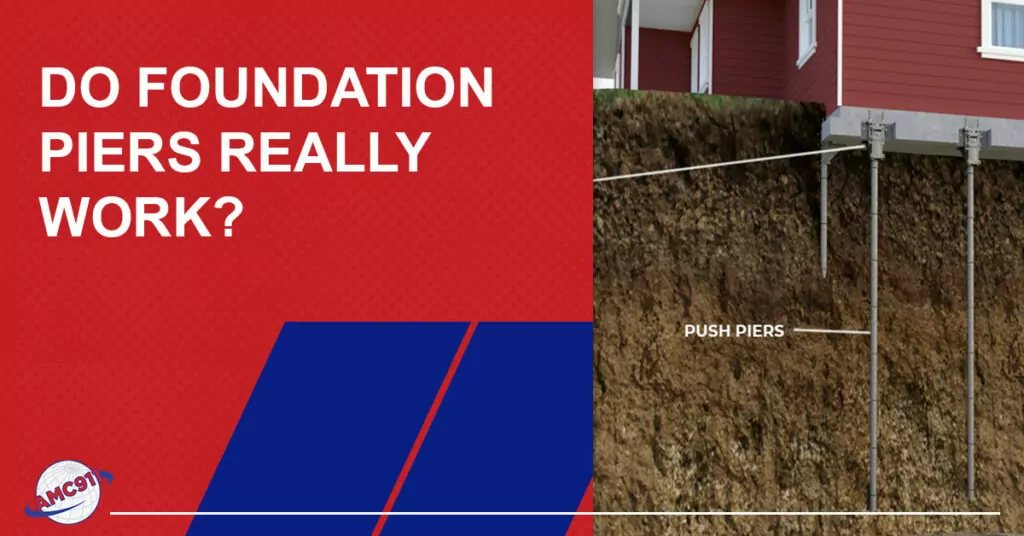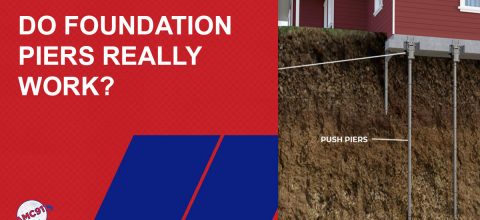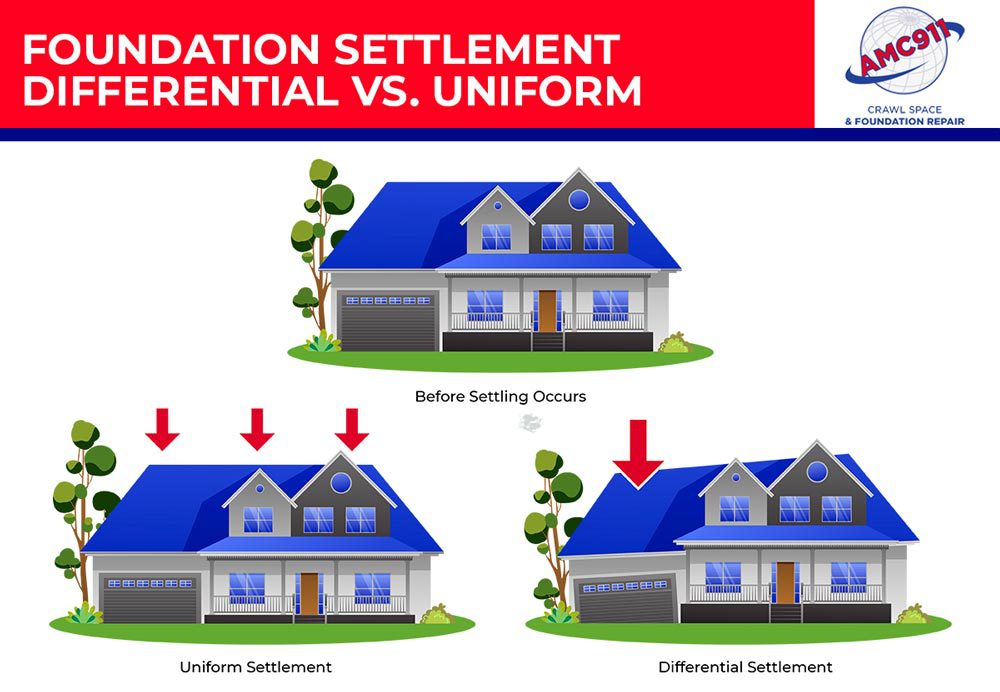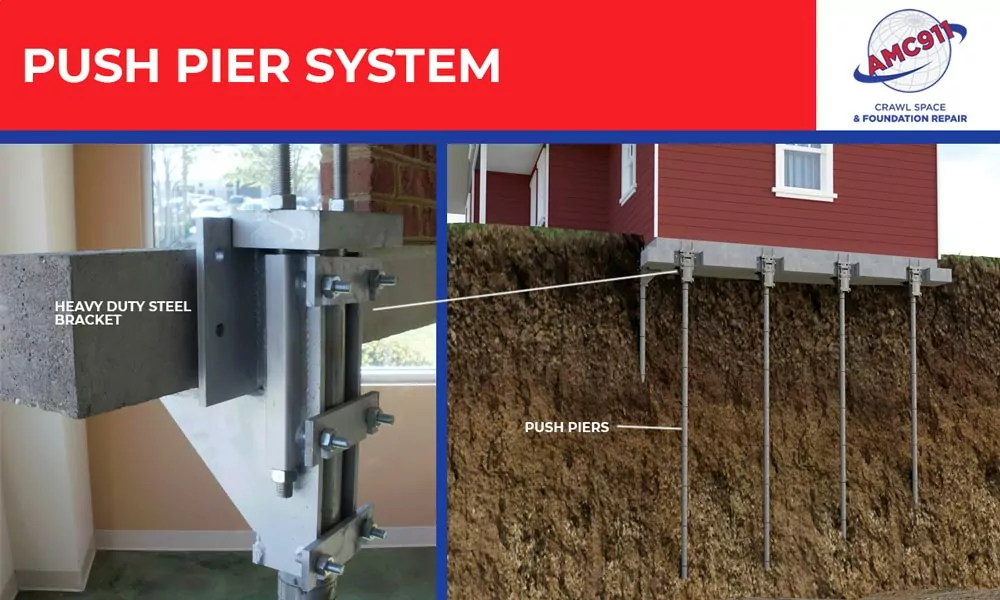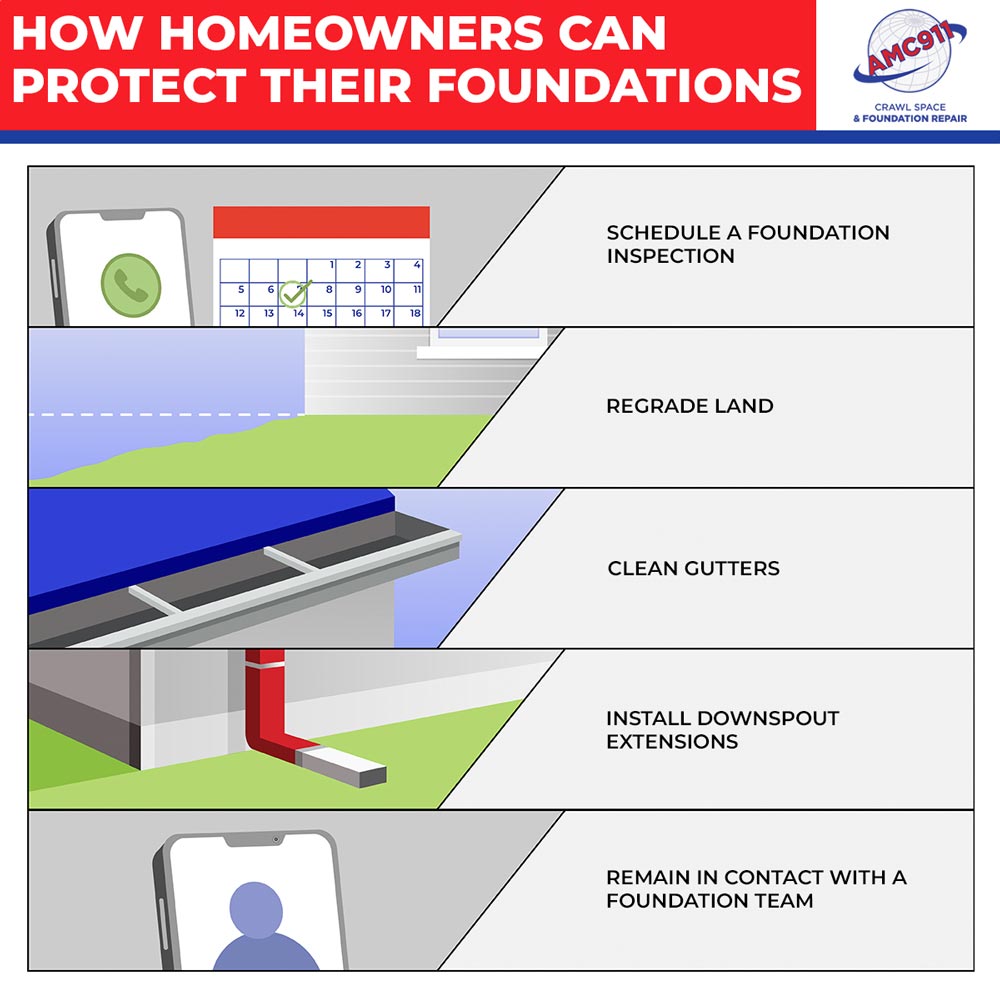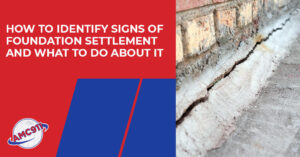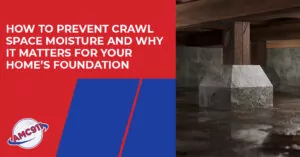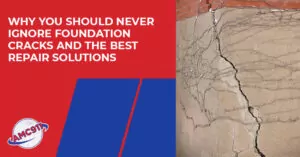Have you ever wondered if foundation piers really work for foundation repair? We believe that installing foundation piers is one of the best options. However, this repair option is available for specific types of foundation issues only. This article will help you understand more about foundation piers and the scenarios in which they are beneficial.
What is Differential Foundation Settlement?
Before learning how foundation piers work, you should understand the type of issue they can solve. Piers resolve foundation issues related to differential foundation settlement in most cases.
Foundation settlement occurs when a home’s foundation shifts. Sometimes, these shifts are minimal, uniform, and completely benign. This type of uniform foundation settlement is not problematic and is most prevalent in the first year after construction.
In contrast, differential settlement involves uneven foundation shifts. These shifts can be significant and result in many different issues throughout your home, including cracked walls, sloping floors, and more. The next section will reveal how piers can remedy this issue.
How Foundation Piers Work
Piers are usually the go-to option when a foundation is experiencing differential settlement. When you hire a professional team to install these piers, they will begin by embedding them into the earth until they reach bedrock or firm strata. The team will then connect the top of the piers to the foundation via a strong bracket.
Thanks to this connection between the firm strata and the foundation, your repair team can use the piers to stabilize and lift your home. This team will raise the house until it is as level as possible. The piers also add incredible stability to the home, making future settlement issues much less likely.
Types of Foundation Piers
While all foundation piers serve the same purpose, you should remain aware of the two main foundation pier types. These main types are known as push and helical piers.
Your foundation team will press the push piers into the ground until they reach firm strata. After embedding the piers, the team will connect them to the foundation and proceed with the rest of the house leveling process.
The only main difference with helical piers is the manner in which a team will insert them. Unlike push piers, helical piers are like giant screws that twist into the earth. This twisting motion provides the stability your home needs. Whether your foundation repair team chooses helical or push piers depends on many factors they must evaluate.
Signs that Differential Settlement Has Occurred
Understanding how foundation piers work is essential. However, you should also understand the signs that indicate these piers are necessary. Again, piers are a viable solution for differential foundation settlement, which produces one or more of the following signs:
- Wall cracks: Differential settlement will likely cause cracks in your foundation walls. They can also cause cracks that appear in the walls at all other levels of your home.
- Sloping floors: Since differential settlement is uneven, it often causes the rest of your home to be uneven as well. Often, this results in floors that slope significantly in a specific direction.
- Stuck windows and doors: By altering the overall pitch of your home, differential foundation settlement causes your windows and doors to come out of alignment. This faulty alignment can make it incredibly difficult to open and close windows and doors properly.
- Moisture issues: The uneven shifts that differential foundation settlement causes can result in breaks in your drainage system, resulting in poor foundation drainage. Additionally, the cracks’ differential foundation settlement makes it easier for moist air to infiltrate.
How Homeowners Can Protect Their Foundations
Protecting a foundation can help prevent the need for foundation piers and other foundation problems. Fortunately, homeowners have a few easy ways to help keep their foundations intact. While these tasks don’t guarantee a foundation issue won’t occur, they can help. The list below shares some actions you can take to protect your foundation:
- Schedule a foundation inspection: The surest way to recognize and prevent foundation problems is to hire a professional to inspect your foundation. Foundation inspections can help you keep your home’s structures intact and save repair costs in the long run.
- Regrade the land: If the land surrounding your home is flat or pitched toward the foundation, it encourages water to pool and seep inside, resulting in many potential problems. Ensure your landscape has a distinct slope away from the home.
- Clean gutters: Your gutters collect water from your roof and move it away from your home. When clogs occur, your gutters can overflow and deposit water directly onto the soil surrounding your foundation. This makes moisture-related issues more likely to occur.
- Install downspout extensions: If your downspouts are too short, they can drop water directly next to your home. Extensions help ensure the downspouts move the water to a location that does not cause an issue.
- Remain in contact with a foundation team: Whether you schedule an official inspection or not, maintaining contact with a foundation team is one of the best ways to recognize and remedy foundation issues as quickly as possible. Sometimes, this team will suggest foundation improvements you may have never considered.
Get the Right Help for Your Foundation
As noted above, one of the best ways to keep your foundation in ideal condition is to receive advice from an experienced foundation team. If your home also needs foundation piers, this team should be well-equipped to provide and install them.
Anyone in Virginia Beach, Chesapeake, Norfolk, and the surrounding areas in Virginia should contact AMC911 for all your foundation needs. Contact us today to learn more.

